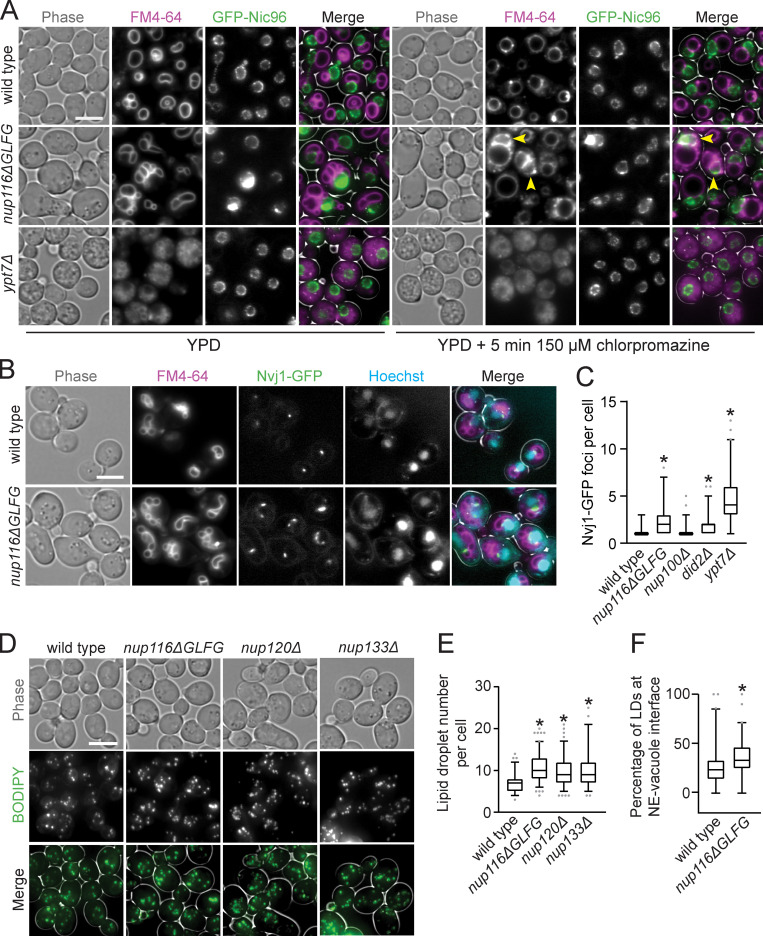Figure 3.
Compositional changes to NE–vacuole interfaces and increased LD levels in NPC assembly mutants. (A) FM4-64–stained GFP-nic96 yeast grown at 36°C were imaged before (left) and after (right) incubation with 150 µm chlorpromazine for 5 min. Arrowheads point to cells that still have significant FM4-64 signal around NE following treatment. Scale bar, 5 µm. (B) FM4-64- and Hoechst-stained nvj1-GFP yeast grown at 36°C. Scale bar, 5 µm. (C) Nvj1-GFP foci per cell in the listed strains. Box and whiskers represent 2.5th–97.5th percentile. *, P ≤ 0.05 compared with wild type using Dunn’s post hoc test (n = 120 from three independent trials). (D) Max project images of BODIPY-stained yeast grown at 30°C. Scale bar, 5 µm. (E) Total LD number per cell in the listed strains grown at 30°C. Box and whiskers represent 2.5th–97.5th percentile. *, P ≤ 0.001 compared with wild type using Dunn’s post hoc test (n = 90 from three independent trials). (F) Percentage of LDs that are at NE–vacuole interface in the listed strains at 34°C. Box and whiskers represent 2.5th–97.5th percentile. *, P ≤ 0.001 compared with wild type using a two-tailed Mann–Whitney U test (n = 90 from three independent trials).

